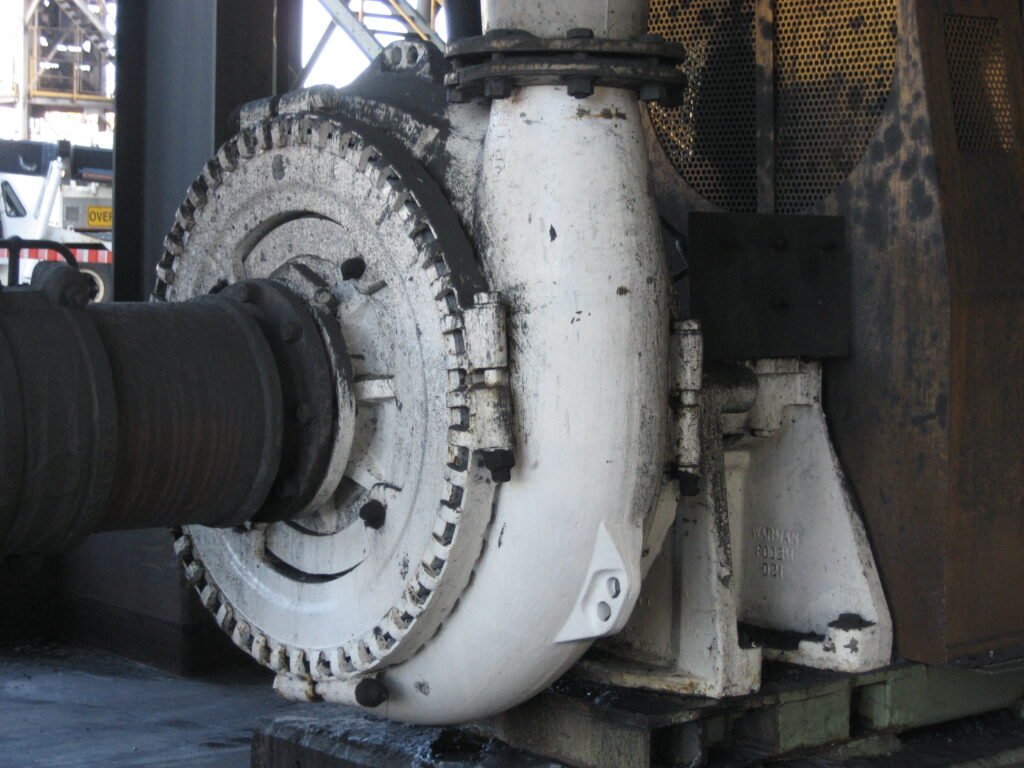What is a Centrifugal Pump?
Pump can be use for transfer fluid in term of liquid and gaseous stage from one location to other location is called pump.
Pump convert electrical energy to hydraulic energy through the action of mechanical.
TYPES OF Pump
There are mainly 2 types of Pumps which are classified in below diagram –(Please refer below image)

Dynamic
Centrifugal pumps
Vertical centrifugal pumps
Horizontal centrifugal pumps
Submersible pumps
Fire hydrant systems
How does a centrifugal pump work
Positive Displacement
Diaphragm pumps
Gear pumps
Peristaltic Pumps
Lobe pumps
Piston Pumps
Dynamic Pump Working
What is a Centrifugal Pump?
The dynamic pump is a type of velocity pump in which kinetic energy is added to the fluid by increasing the flow velocity. This increase in energy is converted to a gain in potential energy (pressure) when the velocity is reduced prior to or as the flow exits the pump into the discharge pipe.
Centrifugal pump is a hydraulic machine which converts mechanical energy into hydraulic energy by the use of centrifugal force acting on the fluid. These are the most popular and commonly used type of pumps for the transfer of fluids from low level to high level. It’s used in Chemical plant, pharma and agriculture industries.
Centrifugal Main Parts –
Impeller
Casing
Delivery Pipe
Suction Pipe with Foot Valve and Strainer
Open Impeller
vanes that are attached to a center hub and mounted directly onto a shaft. Its vanes are free from both side end.
Open impellers are usually used in small, inexpensive pumps or pumps handling abrasive liquids or suspended solids.
Semi closed Impeller
The vanes are free on one side and enclosed on the other. The shroud adds mechanical strength. They also offer higher efficiencies than open impellers. They can be used in medium-diameter pumps and with liquids containing small amounts of suspended solids. Because of the minimization of recirculation and other losses, it is very important that a small clearance exists between the impeller vanes and the casing.
Closed Impeller
The vanes are located between the two discs, all in a single casting. They are used in large pumps with high efficiencies and low required Net Positive Suction Head. The centrifugal pumps with closed impellers are the most widely used pumps handling clear liquids. They rely on close-clearance wear rings on the impeller and the pump casing. The closed impeller is a more complicated and expensive design because of the impeller, but additional wear rings are needed.
The impeller blades can be:
Backward-curved blade design (preferred design due to the negative slope of performance curve)
Radial blade design
Forward-curved blade design (due to positive slope conditions, this design can cause pump surge)
Efficiency Compare of Impeller
What is a Centrifugal Pump?
Which impeller is best efficiency
Closed Impeller > Semi -Closed Impeller > Open Impeller
Casing
It is a pipe which is connected at the upper end to the inlet of the pump to the centre of impeller which is commonly known as eye. The double end reaction pump consists of two suction pipes connected to the eye from both sides. The lower end dips into liquid in to lift. The lower end is fitted in to foot valve and strainer.
three types of casing are used in centrifugal pump
- Volute Casing
- Vortex Casing
- Casing with Guide Blades
Delivery Pipe
It is a pipe which is connected at its lower end to the out let of the pump and it delivers the liquid to the required height. Near the outlet of the pump on the delivery pipe, a valve is provided which controls the flow from the pump into delivery pipe.
How does a centrifugal pump work
Suction Pipe with Foot Valve and Strainer
suction pipe is connected with the inlet of the impeller and the other end is dipped into the sump of water. At the water end, it consists of foot value and strainer. The foot valve is a one way valve that opens in the upward direction. The strainer is used to filter the unwanted particle present in the water to prevent the centrifugal pump from blockage.
Types of Centrifugal Pump
Single stage pump
Two-stage pump
Multi-stage pump
Mechanical Seal
A mechanical seal is a device that helps join systems or mechanisms together by preventing leakage containing pressure, or excluding contamination.